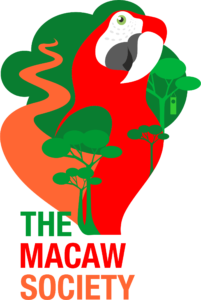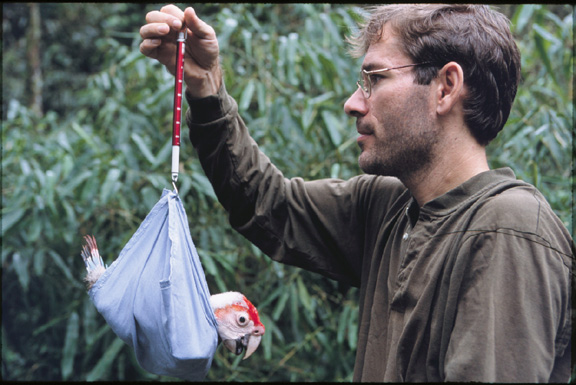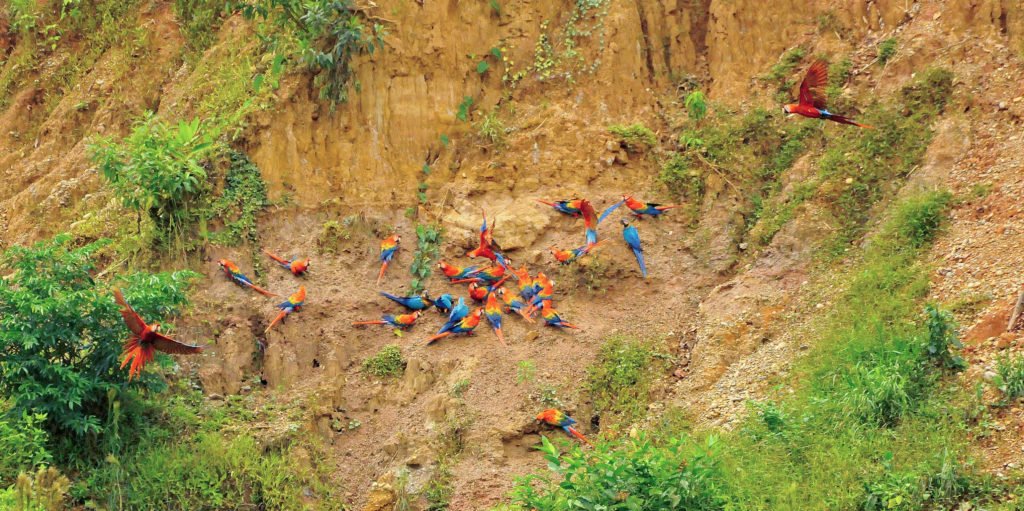
The Macaw Society (previously known as the Tambopata Macaw Project) is a long-term research project on the ecology and conservation of macaws and parrots that started in the lowlands of southeastern Peru under the direction of Dr. Donald Brightsmith of the Schubot Center for Avian Health.
Dr. Brightsmith’s macaw research

Dr. Brightsmith and his group of collaborators have been working with wildlife and local communities since 1999. A long history of dedicated research and monitoring has provided many insights into various aspects of parrots and wildlife of southeastern Peru. He and his group are always looking to collaborate with anyone with a passion for conservation and biology. We have supported many national and international students and look forward to hearing from you should you wish to participate in our project or conduct your studies with our support.
Tambopata: a field laboratory

Tambopata a unique forest environment, with the highest concentrations of avian clay licks in the world. A range of animals come to satisfy their need for salt along the river banks of the region. The experience of hundreds of macaws at a clay lick is one of the world’s ornithological highlights. The Tambopata faces an imminent threat from the paving of a highway through one of the planet’s most biodiverse regions. We need all the help and assistance we can get to try and understand what the impacts may be for one of the forest’s major icons.
Dr. Brightsmith’ s macaw research focalized in the study of the macaw populations of the Tambopata National Reserve and the Bahuaha Sonene National Park. This complex of protected areas offers on 1.4 million ha of pristine primary amazon rainforest (the size of the state of Connecticut in the USA). In this huge area macaws and parrots live without much anthropogenic interactions and for that, it offer an incredible opportunity to study them in their wild natural conditions.
The principal aim of The Macaw Society is to study the various aspects of the ecology of macaws and parrots in the neotropics to help better understand the interactions among clay lick use, food supply, breeding season, breeding success, abundance, and movements. This information can aid conservation-focused projects on parrots worldwide.
